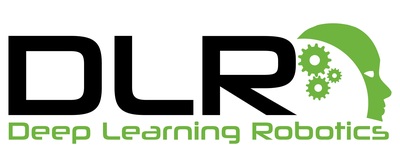
We’ve developed and patented a vision-based robotic controller that enables robots to learn and replicate tasks by observing humans performing them, thereby creating automation opportunities that would be impossible using conventional robotic solutions. We are revolutionizing how robots are programmed and operated in structured and unstructured environments.
Carlos Benaim
info@dlrob.com
https://www.dlrob.com
Deep Learning Robotics (DLRob)
How it works?
Our patented technology revolutionizes user-robot interaction and robot-to-robot collaboration. The DLR Brain captures 3D images of a user performing the intended task on a specific object. With the ability to differentiate between the human hand and the object and using advanced Artificial Intelligence machine learning methods such as neural networks, the sequence is automatically translated into robot control language. This intuitive task-teaching process is agnostic of any specific robot hardware.
Applications
Manufacturers and distributors will be able to significantly increase the productivity of their workers through robotic assistants that can “learn” by just observing the worker performing a given task. These workers will be able to use robots in a similar way they use computers today, with applications that are intended for non-programmers and for non-specialized personnel.
Why to use our technology?
- Hazardous and Unfavorable Environments for Workers: Across the value chain there are worker safety risks, such as prolonged exposure in outside environments during production, walk-in freezers in processing and distribution, and over-crowded kitchens in food retail that could cause sickness amongst a work force, ultimately putting the work force at risk and the possibility to disrupt an entire food chain.
- Highly Variable Production: Manufacturers and distributors alike are moving towards providing a larger variety of products and packing, increasing variability to product recognition needs and process reconfiguration. DLR Brain’s ability for quick task replication finally makes industry robotics viable for these customers, allowing them to quickly change setups (e.g. new products, new packing cases, new packing formats).
- Simple and Repetitive Processes: Monotonous tasks are often beyond the bounds of human concentration, such as inspecting potatoes on a production line, or placing ingredients on a sandwich. The more time we spend doing such activities, the less objective and reliable the process becomes, the more tedious and mundane it is to human employees. This leads to quality control errors and frustrated employees. These are ideal tasks for robotics to support, and with DLR, they can be automated in a plug-and-play way.